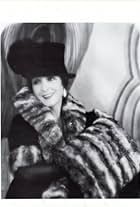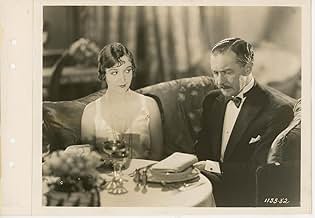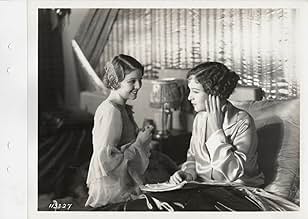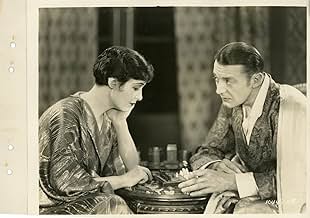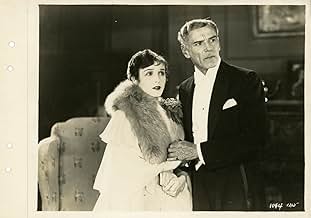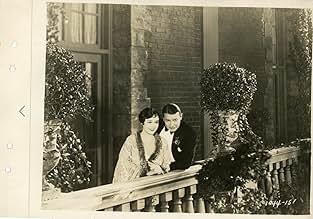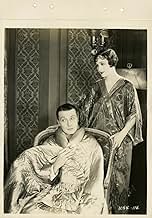Florence Vidor(1895-1977)
- Actress
Houston-born-and-bred Florence Vidor was one of the great beauties of early Hollywood. But while her photogenic looks went a long way, audiences would not get to enjoy or really experience her voice as she abruptly left the silver screen after her first disastrous attempt at a talking picture.
Born Florence Arto on July 23, 1895, she was the daughter of realtor John F. Arto and his wife Ida. Educated in both public and finishing schools, she was also a student at the Convent of the Sacred Heart for a time. Her fate was sealed after a happenstance but eventful first meeting of two aspiring filmmakers: future directors Edward Sedgwick and King Vidor. Vidor, a freelance photographer, cast Florence in his very first 2-reel picture although she had no real designs on being an actress. The two became a romantic item, married in 1915, and welcomed one child together, Suzanne Vidor Parry, in 1919.
King set his sites on Hollywood and the couple made the big move, financing their trip by filming travelogue for the Ford Motor Company. The couple settled in Santa Monica and soon found employment at Vitagraph Studios. Florence knew actress Corinne Griffith from her days in Houston and was introduced around the sets. The studio, quite taken by her exquisite beauty, quickly signed her to a contract, starting with some minor roles in such comedy shorts as The Yellow Girl (1916) and Curfew at Simpton Center (1916). Meanwhile, husband King sought work as a scriptwriter and occasional movie extra.
Florence first turned heads portraying tragic seamstress "Mimi" in A Tale of Two Cities (1917). Audiences took notice and the beautiful brunette was immediately promoted to leading-lady status opposite such established stars as Sessue Hayakawa and chic "drag" performer Julian Eltinge. She and Hayakawa made several pictures together, including Hashimura Togo (1917), The Secret Game (1917), and The White Man's Law (1918), among others. With the popular Eltinge, who often outdressed his leading ladies, the actress graced the comedies The Countess Charming (1917) and The Widow's Might (1918). Within a short time she was starring in quality pictures for both William C. de Mille and his brother Cecil B. DeMille, but still preferred to work for her husband King, who had by this time established himself as a formidable director after opening his own studio in 1919.
A mature, opulent presence, Florence became a huge star under her husband's guidance, operating under the banners of King Vidor Productions and Florence Vidor Productions. With such silent classics as The Other Half (1919), Poor Relations (1919), The Family Honor (1920), The Jack-Knife Man (1920), Real Adventure (1922), Dusk to Dawn (1922), and Conquering the Woman (1922), Florence came to the forefront. Her best-regarded film of that period was King's comedy-drama Alice Adams (1923), remade successfully a decade later by Katharine Hepburn.
King and Florence divorced in 1924 and Florence went on to appear for other well-known directors, notably Ernst Lubitsch, in such glossy pictures as The Marriage Circle (1924) and The Patriot (1928). She also portrayed famous female Revolutionary War character Barbara Frietchie in Barbara Frietchie (1924), but she earned most of her kudos specializing in sophisticated comedy. She was well represented in that genre with Marry Me (1925), The Grand Duchess and the Waiter (1926), and The Magnificent Flirt (1928). Her stylish humor coupled with a charming sensitivity put her squarely on top throughout most of the 1920s opposite such other well-tailored charmers as Adolphe Menjou, Clive Brook, and William Powell.
Florence's first major talking film would also be her last. The unhappy experience and end-result of working on Chinatown Nights (1929), which used highly experimental sound equipment, was enough to convince her to leave films altogether. By that time Florence had married a second time, to famed violinist Jascha Heifetz, and preferred to raise a family. The couple had two children. Following their divorce in 1946, Florence continued to remain completely out of the limelight. She later moved to Pacific Palisades, California and stayed there for the rest of her life. She succumbed to heart failure in 1977 at age 82.
Born Florence Arto on July 23, 1895, she was the daughter of realtor John F. Arto and his wife Ida. Educated in both public and finishing schools, she was also a student at the Convent of the Sacred Heart for a time. Her fate was sealed after a happenstance but eventful first meeting of two aspiring filmmakers: future directors Edward Sedgwick and King Vidor. Vidor, a freelance photographer, cast Florence in his very first 2-reel picture although she had no real designs on being an actress. The two became a romantic item, married in 1915, and welcomed one child together, Suzanne Vidor Parry, in 1919.
King set his sites on Hollywood and the couple made the big move, financing their trip by filming travelogue for the Ford Motor Company. The couple settled in Santa Monica and soon found employment at Vitagraph Studios. Florence knew actress Corinne Griffith from her days in Houston and was introduced around the sets. The studio, quite taken by her exquisite beauty, quickly signed her to a contract, starting with some minor roles in such comedy shorts as The Yellow Girl (1916) and Curfew at Simpton Center (1916). Meanwhile, husband King sought work as a scriptwriter and occasional movie extra.
Florence first turned heads portraying tragic seamstress "Mimi" in A Tale of Two Cities (1917). Audiences took notice and the beautiful brunette was immediately promoted to leading-lady status opposite such established stars as Sessue Hayakawa and chic "drag" performer Julian Eltinge. She and Hayakawa made several pictures together, including Hashimura Togo (1917), The Secret Game (1917), and The White Man's Law (1918), among others. With the popular Eltinge, who often outdressed his leading ladies, the actress graced the comedies The Countess Charming (1917) and The Widow's Might (1918). Within a short time she was starring in quality pictures for both William C. de Mille and his brother Cecil B. DeMille, but still preferred to work for her husband King, who had by this time established himself as a formidable director after opening his own studio in 1919.
A mature, opulent presence, Florence became a huge star under her husband's guidance, operating under the banners of King Vidor Productions and Florence Vidor Productions. With such silent classics as The Other Half (1919), Poor Relations (1919), The Family Honor (1920), The Jack-Knife Man (1920), Real Adventure (1922), Dusk to Dawn (1922), and Conquering the Woman (1922), Florence came to the forefront. Her best-regarded film of that period was King's comedy-drama Alice Adams (1923), remade successfully a decade later by Katharine Hepburn.
King and Florence divorced in 1924 and Florence went on to appear for other well-known directors, notably Ernst Lubitsch, in such glossy pictures as The Marriage Circle (1924) and The Patriot (1928). She also portrayed famous female Revolutionary War character Barbara Frietchie in Barbara Frietchie (1924), but she earned most of her kudos specializing in sophisticated comedy. She was well represented in that genre with Marry Me (1925), The Grand Duchess and the Waiter (1926), and The Magnificent Flirt (1928). Her stylish humor coupled with a charming sensitivity put her squarely on top throughout most of the 1920s opposite such other well-tailored charmers as Adolphe Menjou, Clive Brook, and William Powell.
Florence's first major talking film would also be her last. The unhappy experience and end-result of working on Chinatown Nights (1929), which used highly experimental sound equipment, was enough to convince her to leave films altogether. By that time Florence had married a second time, to famed violinist Jascha Heifetz, and preferred to raise a family. The couple had two children. Following their divorce in 1946, Florence continued to remain completely out of the limelight. She later moved to Pacific Palisades, California and stayed there for the rest of her life. She succumbed to heart failure in 1977 at age 82.
